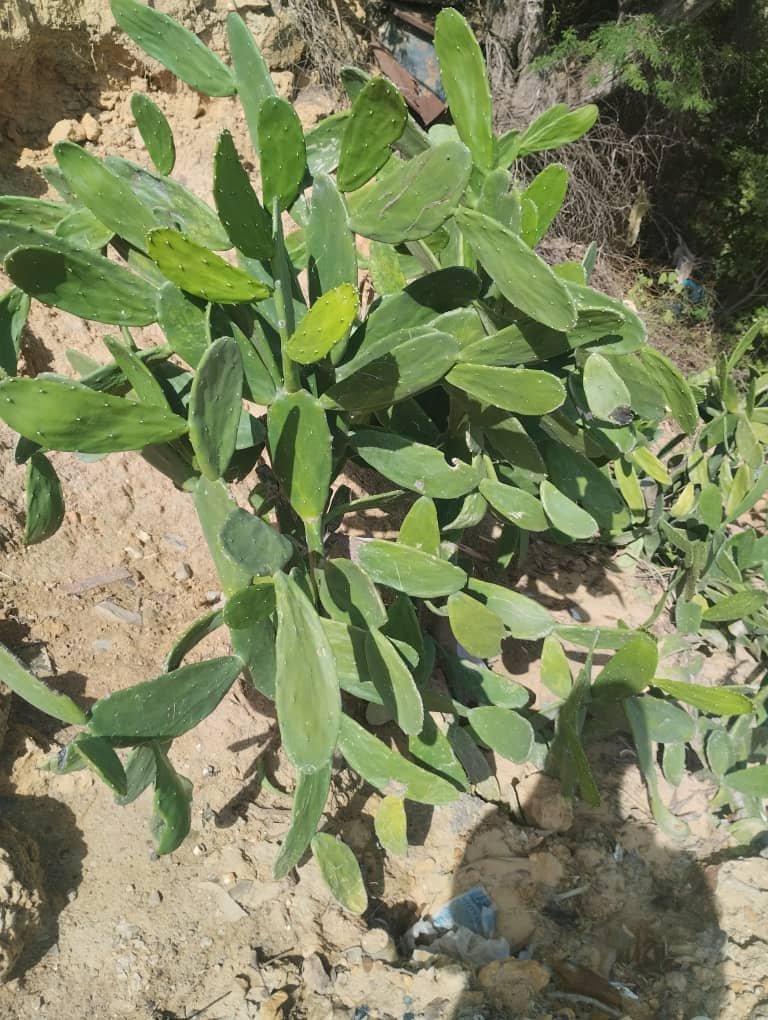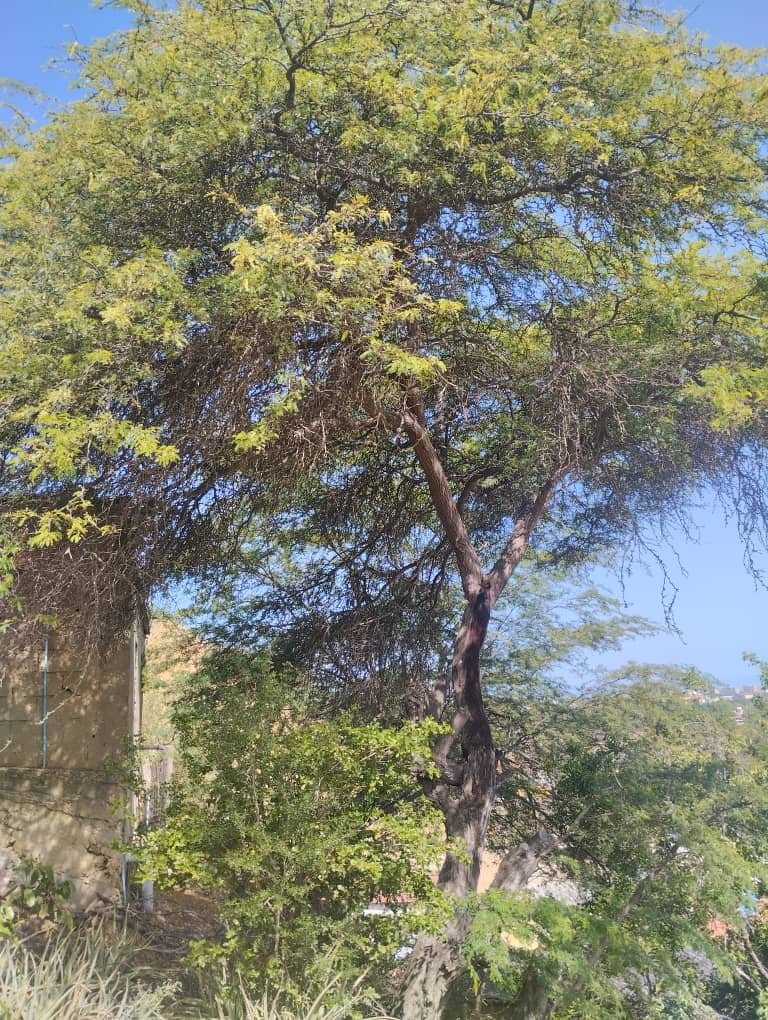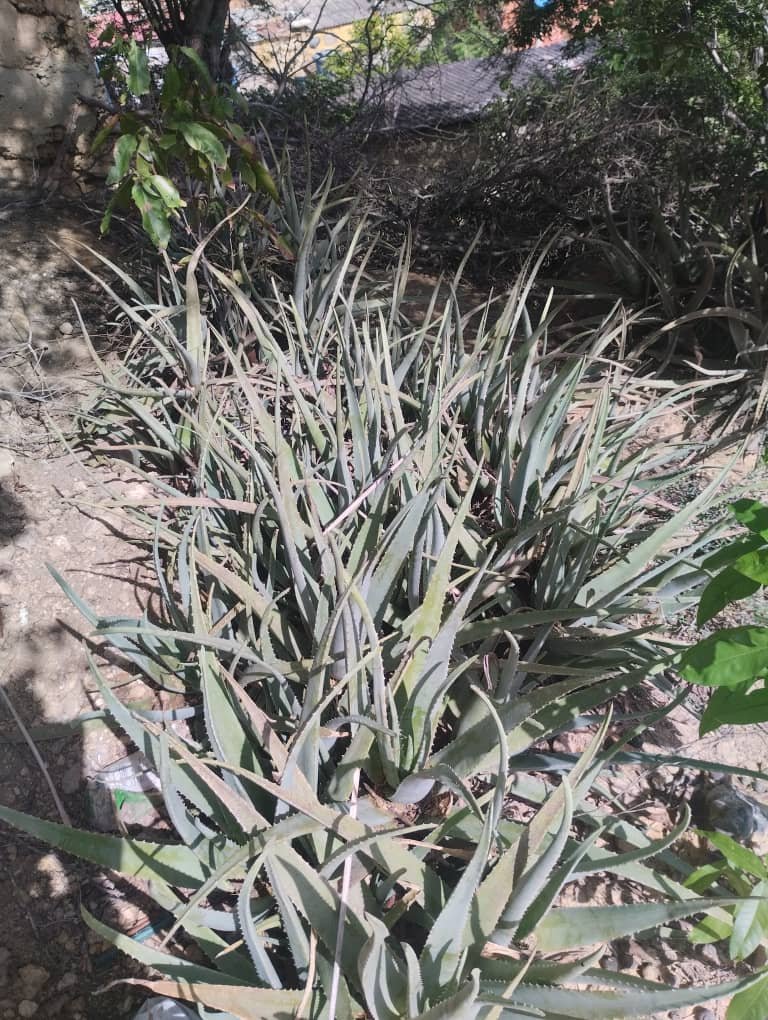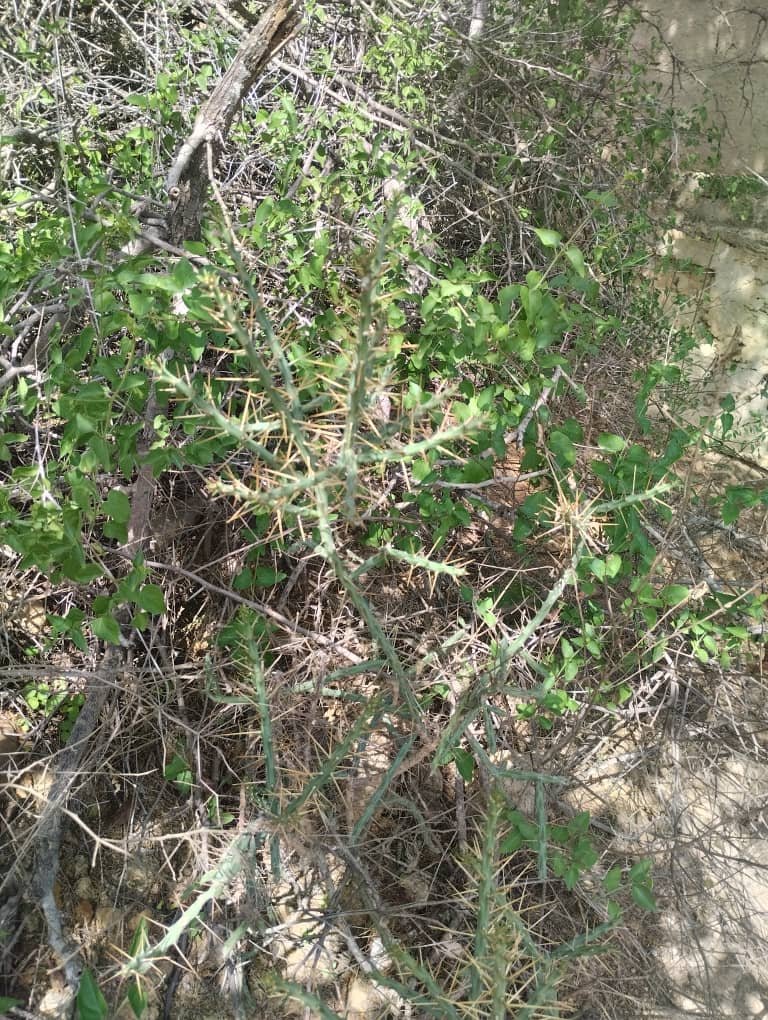In Venezuela there is a diversity of landscapes, specifically in the state of Sucre we can find a range of different shapes and colors, ranging from rivers, mountains, as well as beaches and streams.
One of these landscapes can be seen in the community of Caigüire, specifically in the hill called Pan de azúcar. There you can see cactus of different types that the villagers gave a name to each one regardless of their scientific name.

In the photograph you can see some of these species, among which stand out the hill melon, whose fruit is the pichigüey, you can also see the guasavanos, which according to some scientists belongs to the cactus family. There are also in this sector cactus with large leaves that are characterized by having large and strong thorns, if by accident one of these thorns penetrates the skin, every time we try to remove it, it sinks deeper, so it also happens with the guasavano.

The pricks of the thorns are very painful. There is also a species of carob tree that the locals call Yaque, it is a leafy plant. All plants, shrubs and cactus withstand drought severely, having an adaptation that could be said to be spectacular.

During the summer time or without rain the hill is quite dry, and when the rainy season begins it greens up in an impressive way. It is of significant importance to know that the cactus store a lot of water, when some hunters or neighbors of the sector go into these places they cut the cactus and drink the water to quench their thirst. Especially the cactus called Cardon by the villagers.

The aloe vera or aloe vera is another of the species found in this hill, which according to the villagers serve to alleviate many diseases, as well as to heal and give softness to the skin.
Versión en EspañolEn Venezuela existe una diversidad de paisajes, puntualmente en el estado Sucre podemos encontrar una gama de diferente formas y colores, que van desde ríos, montañas, así como playas y quebradas.
Uno de esos paisajes se puede apreciar en la comunidad de caigüire, puntualmente en el cerro denominado Pan de azúcar. Allí se puede apreciar cactus de diferentes tipos que los pobladores les pusieron un nombre a cada uno independientemente de su nombre científico.

En la fotografía se puede evidenciar alguna de estas especies, entre las que se destacan melón de cerro, cuyo fruto es el pichigüey, también se aprecia los guasavanos, que según algunos científicos pertenece a la familia de los cactus. También existen en ese sector cactus de hojas grandes que se caracteriza por tener unas espinas grandes y fuertes, si por accidente una de estas espinas se penetra en la piel, cada vez que intentamos sacarla ella se hunde más, así también pasa con el guasavano.

Las punzadas de las espinas son muy dolorosas. Además existe una especie de algarrobo que los pobladores la llaman Yaque, es una planta frondosa. Todas las plantas, los arbustos y cactus soportan la sequía de manera severa, teniendo una adaptación que se pudiera decir espectacular.

Durante el tiempo de verano o sin lluvia el cerro se ve bastante seco, y cuando empieza la temporada de lluvia reverdece de una manera impresionante. Es de significativa importancia saber que los cactus almacenan mucha agua, cuando algunos cazadores o vecinos del sector se adentran en estos lugares cortan los cactus y toman el agua para saciar la sed. Sobretodo los cactus llamados por los pobladores Cardon.

La sábila o aloe vera es otra de las especies encontradas en este cerro, que según los pobladores sirven para aliviar mucha enfermedades, así como para cicatrizar y darle suavidad a la piel.
✓Photos from my personal gallery, edited with Fotocollage.
✓Text translated with DeepL.
🌿☘️🍀🌿☘️🌿🍀☘️
✓Fotos de mi galería personal, editadas con Fotocollage.
✓Texto traducido con DeepL.